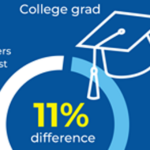In her introduction to the May 1999 issue of this magazine, Pauline Gough, then Kappan’s editor, made “a plea for informed skepticism” about so-called brain-based approaches to K-12 education. The learning sciences had begun to make rapid and often stunning progress (which the National Academies of Science had shared with the public just a few weeks earlier, with the release of the landmark report How People Learn). However, Gough cautioned, neuroscientists had not yet built “a solid bridge from the lab to the classroom.” Until they did so, she argued, educators should be wary of anyone who claims to have figured out how brain research translates to the work of teaching in schools.
So where do things stand today, nearly two decades later (and, appropriately enough, just weeks after the release of How People Learn II)? Have the learning sciences progressed to the point where they can reliably inform teaching practice, much as the medical sciences inform the practice of doctors?
While Gough’s plea for informed skepticism continues to resonate, I find myself leaning toward cautious optimism. The contributors to this issue of Kappan make a convincing case that brain research — along with research in cognitive, social, and developmental psychology — has moved far past the realm of laboratory-based speculation to produce many actionable findings that can and should inform classroom practice. Given not just the strength but also the usefulness of what researchers have learned about memory, attention, motivation, emotional regulation, social development, language processing, and more, it would be irresponsible not to weave this material more fully into the preparation and professional development of educators.
The call for greater application of research findings to school practice has become a common refrain. For instance, in a riff on Carl Kaestle’s well-known 1993 article, “The awful reputation of education research,” Robert Slavin (2017) recently asserted that, in fact, education research is becoming pretty darned “wonderful” these days, thanks to growing investments in randomized studies and evaluations of classroom interventions and programs.
At the same time, and as Linda Nathan observes in this month’s Backtalk column — describing her experience on the committees that produced the 1999 and 2018 How People Learn reports — neuroscientists and research psychologists have become far more willing, over the last two decades, to acknowledge how tricky it can be to translate scientific findings from the lab to the classroom. To understand how students learn, we also have to wrestle with, and conduct research into, the complex cultural dynamics and political forces that shape what happens in and around schools.
Still, for all the progress we’ve made since 1999, we can’t yet afford to ease up on the informed skepticism. For one thing, some people will always be willing to exaggerate and misrepresent the research to promote themselves or their products. But even more important — and as Tracey Tokuhama-Espinosa discusses in this issue — the public discourse about brain research is crawling with mistaken old ideas (about learning styles, for instance, or right-brain/left-brain thinking) that, like zombies, simply refuse to die. If educators are to learn the most important lessons from research, they will have to unlearn some things as well.
References
Gough, P.B. (1999). A plea for informed skepticism. Phi Delta Kappan, 80 (9), 642.
Kaestle, C. (1993). The awful reputation of education research. Educational Researcher, 22 (1), 23-31.
Slavin, R. (2017, December 6). The wonderful reputation of educational research. Huffington Post.
Citation: Heller, R. (2018). The editor’s note: On learning, brains, and zombies. Phi Delta Kappan, 100 (4), 4.
ABOUT THE AUTHOR

Rafael Heller
Rafael Heller is the former editor-in-chief of Kappan magazine.










